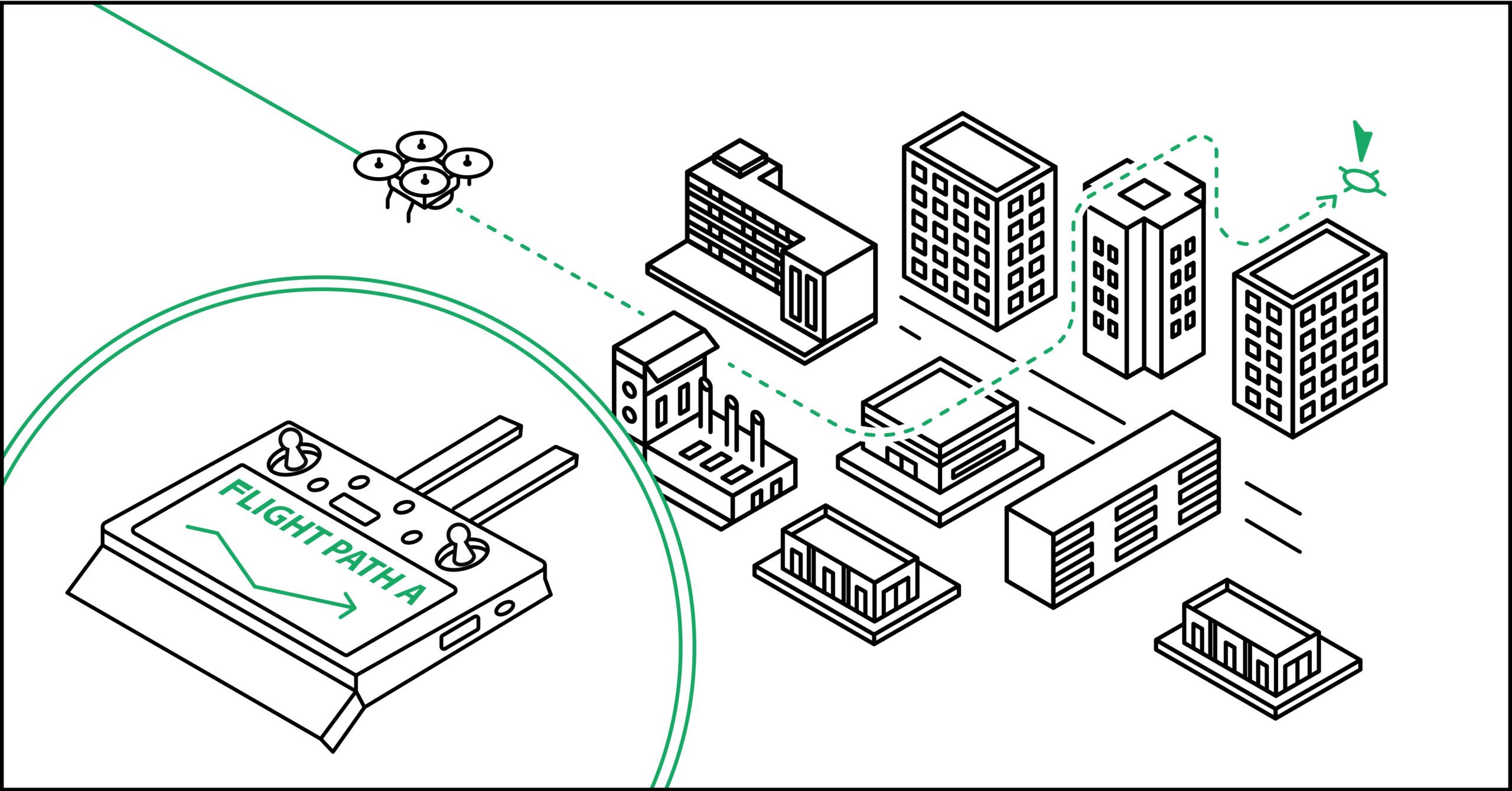

 DRONELIFE presents this guest post by Mark Wilkerson, Product Manager at Point One Navigation, providing a centimeter-accurate positioning system. In this piece, Mark lays out the reasons that RTK might be right for your commercial drone application. DRONELIFE neither accepts nor makes payment for guest posts.
DRONELIFE presents this guest post by Mark Wilkerson, Product Manager at Point One Navigation, providing a centimeter-accurate positioning system. In this piece, Mark lays out the reasons that RTK might be right for your commercial drone application. DRONELIFE neither accepts nor makes payment for guest posts.
The Five Reasons Your Drone Needs RTK
By Mark Wilkerson, Point One Navigation Product Manager
There are more drones in the sky than ever, and that makes precise location services more important than ever. And even if you’re not flying multiple drones at the same time, precise positioning can let you do things you never thought possible. Real-time kinematic (RTK) positioning gives your drone centimeter location accuracy without the need for ground control points (GCPs) or time-consuming post-flight post processing.
What is RTK?
Typically, drones rely on global navigation satellite system (GNSS) data to determine their locations. But GNSS can be inaccurate due to atmospheric interference, signal multipath, and satellite orbit and clock errors. Usually drones need ground control points (GCPs)—known points on the ground used to calibrate and correct their data. If there are no GCPs, then location accuracy can severely suffer. Post-processed kinematic (PPK) is another method for improving location accuracy, but only works after the fact. Data is collected during the flight, but needs to be processed later to achieve better accuracy.
RTK does what it says in the name: Provides real-time positioning data. Drones with RTK communicate with a network of installed base stations that correct GNSS data. How does RTK work? The RTK network can compensate for things like atmospheric disturbances, satellite clock inaccuracies, and orbital errors. With RTK, you can instantly achieve 1-3 cm positioning accuracy. If your drones work in construction planning, agriculture mapping, or infrastructure inspection, that level of accuracy is crucial.
Here are five reasons why your drone needs RTK, and some of the amazing things you can do when you have centimeter-level positioning accuracy.
1. No More Ground Control Points
Many drone operators set up GCPs or base stations for more accurate positioning. RTK networks make those GCPs unnecessary. Just arrive at a site, launch your drone, and fly. The RTK network will give your drone all the data it needs to calculate precise location instantly in real time. That means you can spend more time collecting the data you need, and less time setting up GCPs.


Figure 1 – Caption: Ground control points require setup at every site vs. RTK Networks that cover large areas.
2. Reduce Post Processing
If you’re using PPK, it could take hours to process all the data you gathered from photogrammetry, LIDAR frame matching, or mapping. With an RTK network, post extensive processing isn’t needed—you get high-precision positioning data from the start. On average, RTK–enabled drones reduce post-processing time by about 90%.
3. Avoid Collisions
If you’re operating an entire drone fleet, or just flying in a crowded area, avoiding collisions is paramount. One slipup can cost thousands and set your project back. RTK gives you the real-time positioning you need to avoid collisions and to protect your investment. Good RTK data coupled with path planning can prevent collisions before they happen.


Figure 2: RTK simplifies path planning.
4. Get Detailed Flight History
RTK can give you detailed flight history, including timestamped locations, so you can determine if there are any remaining location inaccuracies and where they may be coming from. With Point One RTL, you can send a single HTTPS request and receive plain, well-informed JSON data in return for any RTK-enabled drones.
5. Do More With Your UAV
With super-precise real-time location data, you can do more with your drone than ever before. Precision agriculture, volumetric measurement, inspection, and a host of other location-based use cases all benefit from RTK technology.
Agriculture – Drones with RTK can deliver more accurate soil health analysis, crop monitoring, and field mapping data. That means farmers can practice site-specific crop management, yield more crops, use resources more efficiently, and reduce environmental impacts.
Mapping & Surveying – RTK makes rapid data collection with high accuracy simile, making drones ideal for topographic surveys, GIS data collection, and environmental monitoring.
Inspections & Public Safety – RTK-enabled drones can be an efficient and safe way to assess infrastructure like dams, bridges, buildings, and power lines. They can also play an important role in emergency response, search and rescue, and disaster management.
Construction – You can use RTK drones for site planning, monitoring progress, and making sure that projects follow their blueprints. They can deliver precise data that helps reduce costly errors, ensures compliance with regulations, and enhances overall efficiency.
Mining – With RTK, you can use your drone for surveying mine sites, monitoring stockpiles, and calculating the volume of extracted materials. They provide safer and more cost-effective alternatives to traditional survey methods, especially in hazardous environments.


Caption: Currently, Point One Navigation provides over 1,400 base stations worldwide, with more being established every day. This includes most of North America, Europe and now South Korea
RTK networks can give your drone the precision it truly needs to be useful for tomorrow’s businesses. Point One has over 1,400 base stations across the globe–providing centimeter-accurate positioning in many countries, including most of Europe, the US, parts of Canada as well as South Korea. Our network continues to expand every day, delivering super-accurate real-time positioning data that will help make drones even more useful in our everyday lives.

 Mark Wilkerson is Point One’s Product Manager. He’s a veteran engineer & technical leader with more than 30 years’ experience in large, distributed, and embedded applications.
Mark Wilkerson is Point One’s Product Manager. He’s a veteran engineer & technical leader with more than 30 years’ experience in large, distributed, and embedded applications.
Read more:
Miriam McNabb is the Editor-in-Chief of DRONELIFE and CEO of JobForDrones, a professional drone services marketplace, and a fascinated observer of the emerging drone industry and the regulatory environment for drones. Miriam has penned over 3,000 articles focused on the commercial drone space and is an international speaker and recognized figure in the industry. Miriam has a degree from the University of Chicago and over 20 years of experience in high tech sales and marketing for new technologies.
For drone industry consulting or writing, Email Miriam.
TWITTER:@spaldingbarker
Subscribe to DroneLife here.
See Also
Tags: DJI RTKdrone base positioning systemGNSS positioningPointOne NavigationrtkRTK for drones





Related Posts
Drone Racing League and U.S. Air Force Launch Initiative to Support Women in STEM and Sports
Terra Drone Corporation Expands into U.S. Market through Strategic Investment in Aloft Technologies
Enhancing Photogrammetry Accuracy with Advanced GCPs Integration by SimActive and CompassData